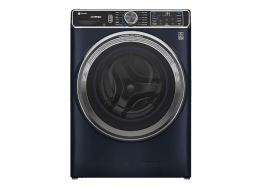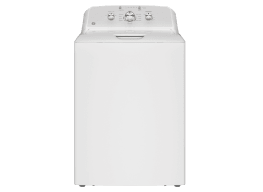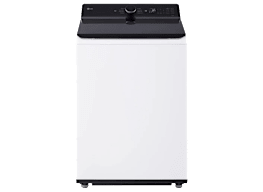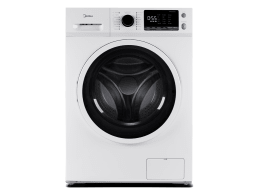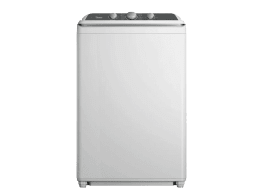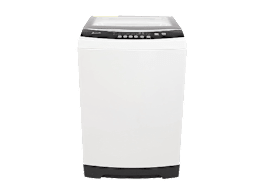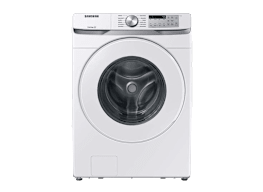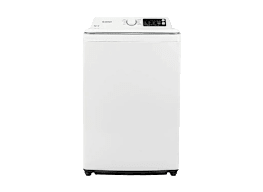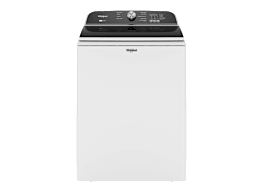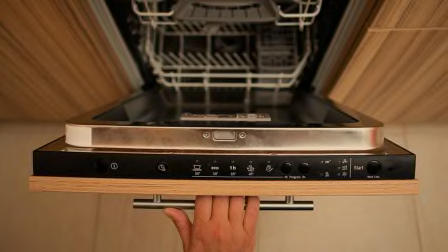5 Things to Know About Front-Load Washers
They're typically the most energy-efficient washing machines, but there are a few things to consider before buying one
When you shop through retailer links on our site, we may earn affiliate commissions. 100% of the fees we collect are used to support our nonprofit mission. Learn more.
Front-load washers—those that open up at the front of the machine instead of the top—deliver superior cleaning performance and are incredibly efficient.
Our tests have found that they use the least amount of water of any other category of washers (see the illustration below) and extract more of it, cutting dryer time and energy use. What’s more, front-load washers are often gentler on fabric and quieter than top-loaders.
And yet only 28 percent of washers shipped to stores in 2020 were front-loaders, according to the Association of Home Appliance Manufacturers, a substantial drop from the 38 percent shipped in 2009. By comparison, 44 percent of shipped washers were top-load agitators and 28 percent were high-efficiency top loaders.
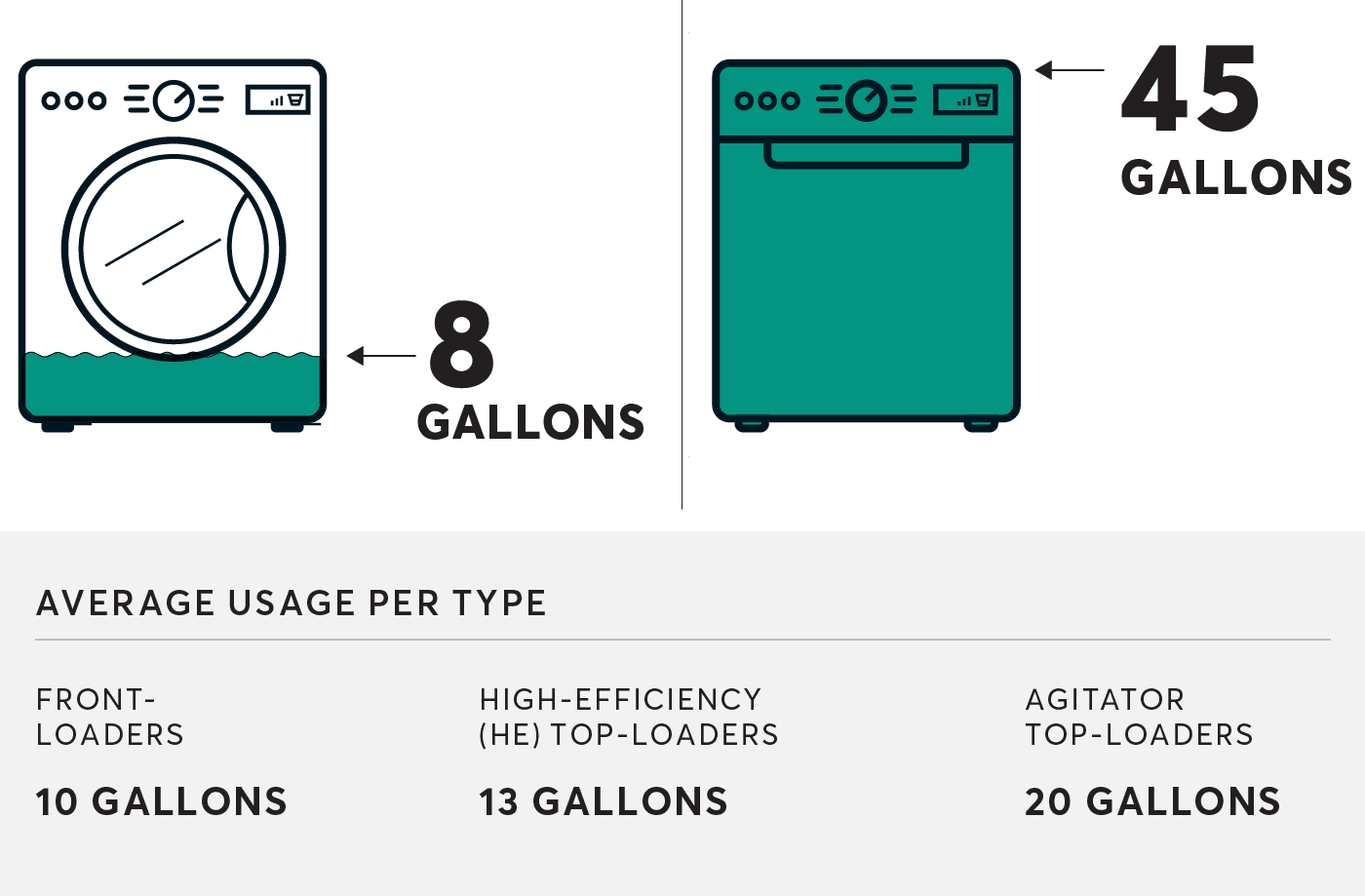

Indeed, front-load washers have a median cost of $1,038 compared with top-load high-efficiency (HE) washers ($740) and top-load agitators ($740). To compete better with lower-priced top-loaders, some manufacturers have introduced cheaper front-loaders that sell for $800 or less.
Still, with all things being equal, there’s no denying that front-load washers have an efficiency advantage—and that can leave you with more savings in the long term. For the most eco-friendly washers in our ratings, look for those bearing Consumer Reports’ Green Choice designation.
Pros & Cons of a Front-Loader
Below are five key facts to consider when shopping for a front-loader. To find out more about these machines and how they compare with top-loaders, see our washing machine buying guide. CR members can read on for details on some of the top-performing front-loaders from our rigorous tests.
For more recommended options, see our comprehensive washing machine ratings, which you can filter according to type, brand, price, and other criteria that matter to you.
1. Wash Times Can Be Lengthy
At 70 to 120 minutes per load in our tests, front-loaders are the slowest type of washer. High-efficiency (HE) top-loaders, the type without a center-post agitator, usually take 60 to 80 minutes per load, and most agitator top-loaders clock in between 35 and 70 minutes.
We use the normal-wash/heavy-soil setting in our tests, but you can shorten your wash time by choosing a normal-soil setting. Some front-loaders have dedicated time-saving settings as well.
Keep in mind that the time lost in washing may be saved in drying—which can mean you save on your energy bills, too. “The front-loader’s spin cycle is faster than other washer types,” says Rich Handel, the CR tester who oversees our laundry lab. “That means more water is extracted from your laundry, and dryer time is shorter.”
Here’s more about how a front-load washer works.
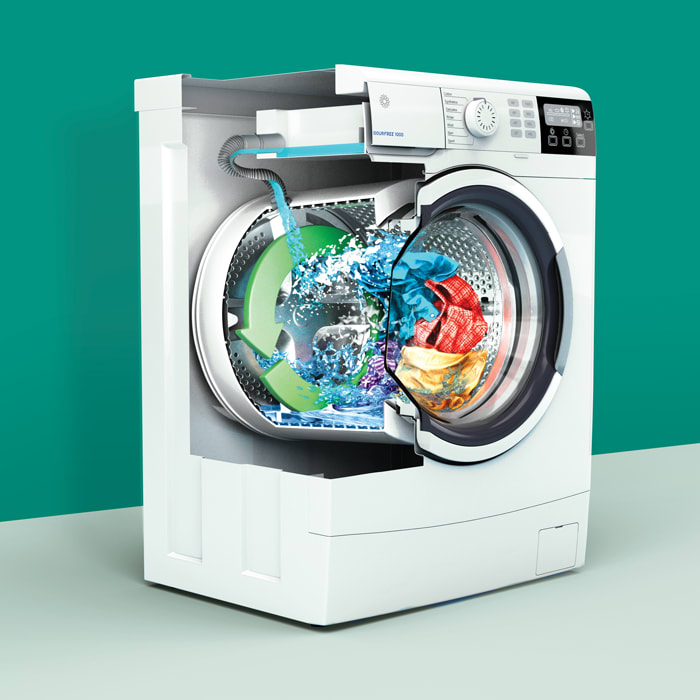
2. Small Loads Are Okay
The front-loaders we test have claimed capacities of 3.5 cubic feet to 5.8 cubic feet. CR readers have asked whether these big machines can wash small loads—and, in fact, they can. “A front-loader should do a good job cleaning a small load,” Handel says. “Unlike top-loaders, front-loaders do not rely on clothes rubbing up against each other to get them clean.”
Front-load washers adjust the amount of water to the size of the load you’re washing. They clean by lifting clothes up as the drum turns, then dropping the clothes into the water. So the size of a load of laundry really doesn’t matter as long as the dirty clothes have enough room to move around—so don’t overstuff.
3. Not All Machines Can Be Stacked
In our tests, most front-loaders can be stacked with a matching dryer on top. (You might have to buy the stacking kit separately.) But that’s not always the case; some washer-dryer pairs can’t be stacked. (Check under “Specs” in our ratings before making a purchase.)
The reason for this can vary. Sometimes a detergent dispenser might be on top of the washer, where it would be blocked if the machines were stacked. Or in the case of the Samsung FlexWash, there’s a mini top-load washer atop a full-sized front-loader.
One other fit factor to be aware of: Some front-loaders in our tests are 2 inches wider than the standard 27 inches, and height and depth can vary by as much as 8 inches. Be sure to measure your laundry space and entry door widths to ensure that the machine will fit through.
4. They Tend to Vibrate
To extract more water, a front-loader’s drum spins faster than a top-loader’s drum. “The front-loader’s drum rotates on a horizontal axis, similar to a dryer,” Handel says. “When vibrations occur, they’re transferred to the floor.” Vibrations aren’t typically a problem on a concrete floor, but they can be on a wood-framed floor.
The good news: Washer manufacturers are using better components to lessen vibration compared with the earlier models we’ve tested. Many of the front-loaders in our washing machine ratings earn a very good rating in our vibration tests, meaning you may feel your wood-framed floor vibrate, but only if you’re near the washer. A handful even garner an excellent rating, meaning you’ll barely feel any vibration at all.
If you find that your machine vibrates too much, make sure that it’s level and that all the feet are in solid contact with the floor.
5. They Might Require Extra Care
Thirteen percent of all front-load washer owners reported mold or mildew buildup in their machines compared with only 3 percent of HE top-load washers and 1 percent of top-load agitators. And 14 percent of front-loaders were cited for odor compared with 5 percent of HE top-loaders and 3 percent of top-load agitator washers.
Mold can develop in various parts of the washer, including the dispensers and the rubber gasket around the opening. To curb washer mold, follow the instructions in your owner’s manual. Run the tub-clean feature regularly. If your washer doesn’t have that feature, run the machine on the hottest water-temperature setting with a cup of bleach but no laundry.
When you’ve completed your last load, dry the inside of the door and the rubber gasket, carefully pulling it back to clean away residue. Between loads, open the dispensers to give them a chance to dry. If young kids aren’t scampering about, keep the washer door ajar between loads to give the interior a chance to dry out.
If young children are present, lock the door to your laundry room so that they can’t access the front-loader. (There have been several child deaths linked to front-loaders.)
Best Front-Load Washers
To find the best front-load washers, we launder fabric swatches treated with a variety of stubborn stains, including red wine, cocoa, and carbon (which is similar to soot). In addition to evaluating how well a washing machine removes these stains, we also assess how gentle it is on fabrics, record its water usage, and register the energy a dryer needs to dry a washed load of laundry.
Last but not least, our panelists take note of each machine’s noise levels during the fill, agitate/tumble, drain, and spin cycles. Here are four of the highest-scoring performers in our ratings.

















